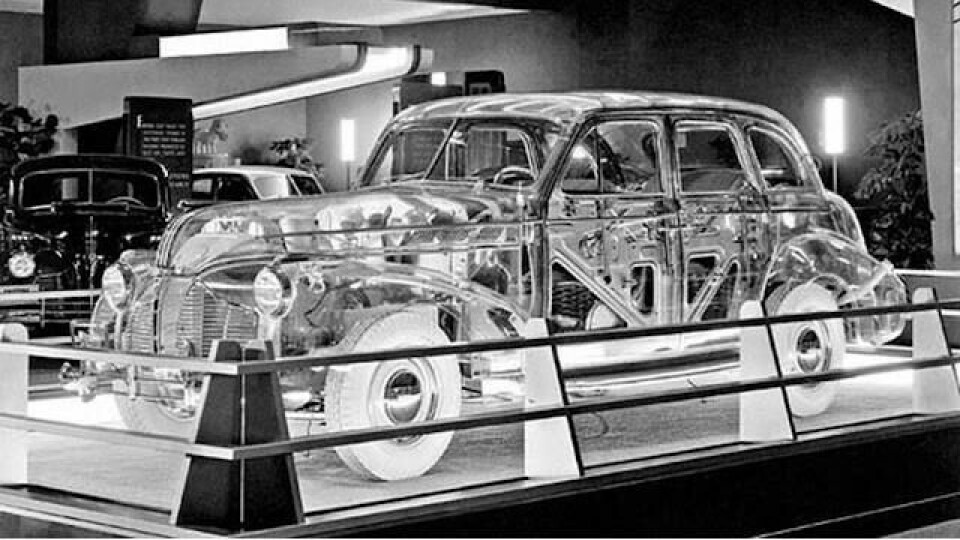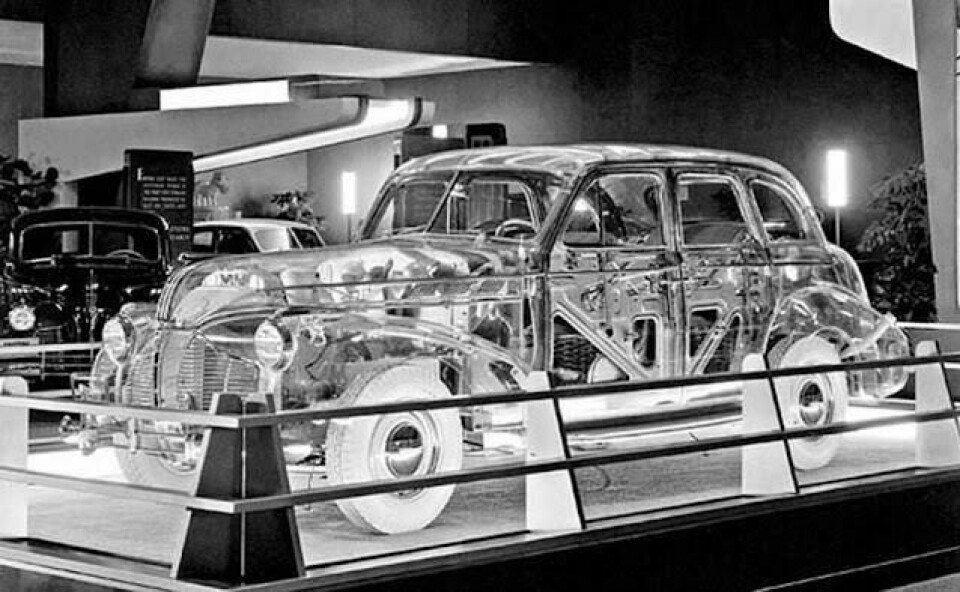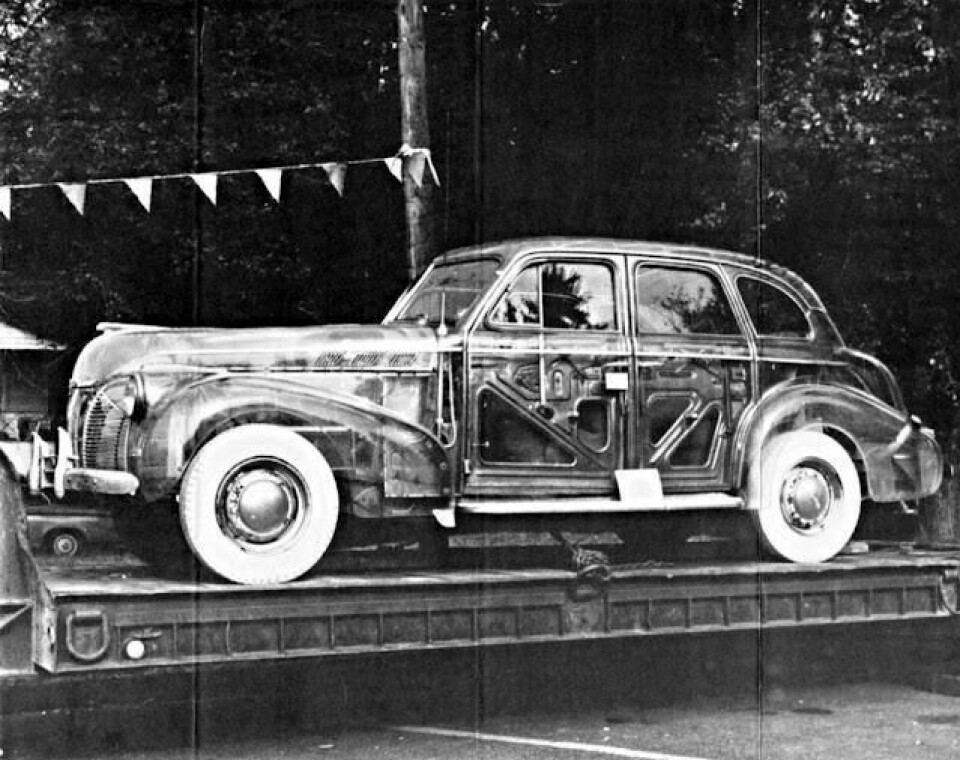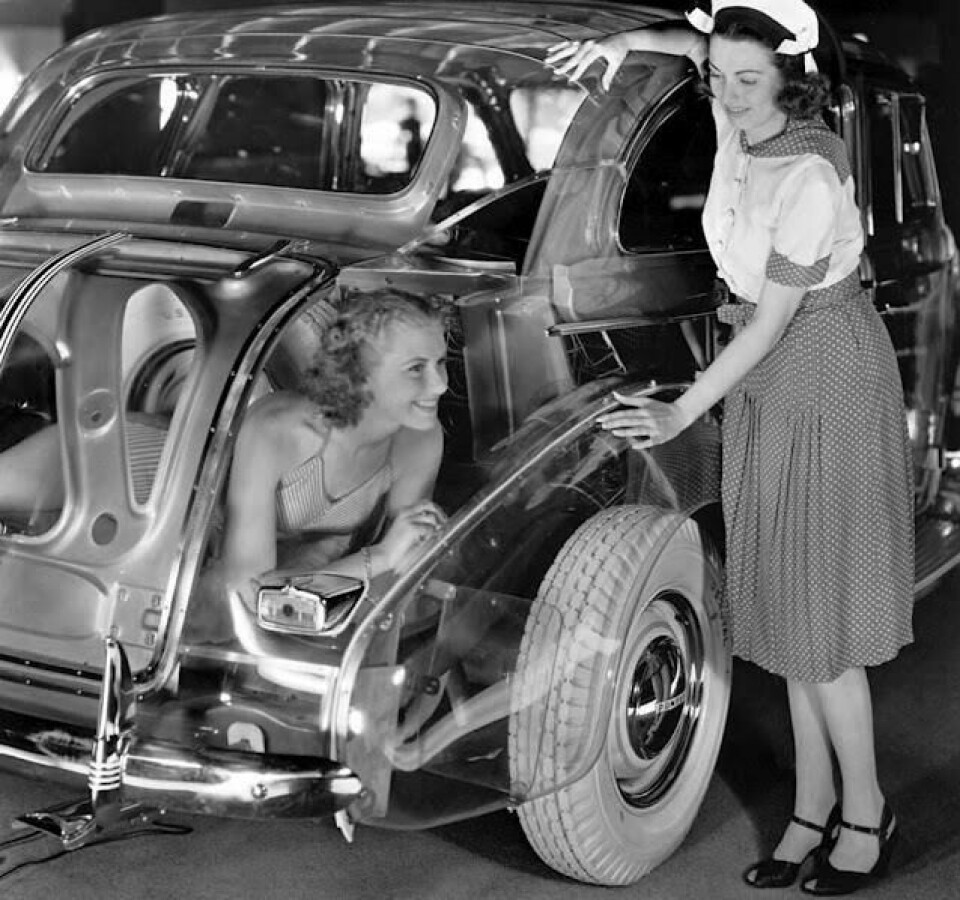
Concept Car of the Week: Pontiac ‘Ghost Car’ (1939)
The transparent Pontiac Ghost Car was unveiled at the 1939 World’s Fair in New York as part of General Motors Futurama exhibit
Visitors to the 1939 World’s Fair in New York were treated to a vast array of different visions of the world of tomorrow. One of the most popular exhibits – a whole world in miniature, really – was the General Motors Futurama. The vast exhibition was part theme park ride and part GM showroom.
?UMBRACO_MACRO macroAlias="RTEImage" image="546123" caption="The General Motors Futurama exhibit at the 1939 New York World’s Fair" lightbox="1" position="left" size="large-image" ?
Almost 30,000 visitors a day toured the Futurama, which included a ride through an imagined city of 1960 complete with forests of skyscrapers, futuristic highways and cars, houses and offices of the future.
?UMBRACO_MACRO macroAlias="RTEImage" image="546126" caption="The Futurama previewed the city of 1960" lightbox="1" position="left" size="large-image" ?
In the Highways and Horizons showroom, various GM vehicles were presented, including one seemingly magical car – a transparent, Plexiglas-bodied Pontiac Deluxe Six.
?UMBRACO_MACRO macroAlias="RTEImage" image="546133" caption="One of the best photos of the ‘Ghost Car’ shown at the 1939 World’s Fair. The transparency is very evident" lightbox="1" position="left" size="large-image" ?
At the time, Plexiglas was still a novel invention to the American public. Many had only seen the material in magazine photographs. Invented at the chemical company of Röhm and Haas in Germany, it was considered a miracle material in the 1930s. The company had already invented the first safety glass, Luglas, which had marked the firm’s entry into acrylic products in 1928.

?UMBRACO_MACRO macroAlias="RTEImage" image="546116" caption="Plexiglas was promoted as a miracle material – lightweight, flexible, unbreakable" lightbox="1" position="left" size="large-image" ?
Plexiglas, like so many inventions, was discovered by accident in 1933. A bottle of its base chemical solution was left in the sunlight. The light and heat caused a reaction that destroyed the bottle but left a lump of polymethyl methacrylate, the material soon to be known as Plexiglas (readers in the UK will know the product as Perspex. Lucite is another trademarked term, as is Crylux and Acrilyte. They are all the same material, with perhaps some minor chemical variations for different applications or products.)
?UMBRACO_MACRO macroAlias="RTEImage" image="546114" caption="The inventors of Plexiglas liked to show off its versatility. Here a Plexiglas violin, though no word on its sound quality" lightbox="1" position="left" size="large-image" ?
Röhm engineers quickly learned how to standardise the process and Plexiglas was born. Making the material commercially viable took until the end of the decade, and General Motors worked with the company to bring it to market, seeing the potential for a number of automotive applications.
The car cost some $25,000 to build ($450,000, or £346,000/€397,000, in today’s money). That price would have bought six fully loaded Cadillacs at the time
?UMBRACO_MACRO macroAlias="RTEImage" image="546112" caption="RCA presented a transparent television at the Fair. The case was made of Lucite" lightbox="1" position="left" size="large-image" ?
As the World’s Fair approached in 1938, Rohm and Haas was contracted to provide General Motors with a Plexiglas body for the Pontiac Deluxe Six, as they had already constructed one semi-transparent car, an Opel Olympia in 1937. That car was known to the automotive trades in Germany and to insiders at GM, but not to the US public. The Olympia car had a Plexiglas bonnet, roof and side panels, but conventional steel fenders. It also had Plexiglas seats that made for a transparent crystalline cabin.
?UMBRACO_MACRO macroAlias="RTEImage" image="546111" caption="Opel Olympia Plexiglas car – fenders, front and rear, of steel, but seats of Plexiglas" lightbox="1" position="left" size="large-image" ?
The transparent Pontiac was seen as a perfect World’s Fair attraction – plenty of ‘wow’ factor, but also believable, as the donor car was a stock Pontiac, just with a transparent body. The car even ran; the engine and transmission were fully operational.
?UMBRACO_MACRO macroAlias="RTEImage" image="546137" caption="The Pontiac Ghost Car and the production Series 26 of that same year" lightbox="1" position="left" size="large-image" ?
Röhm and Hass had been provided with a set of Pontiac drawings, so it was relatively easy to fabricate the body – and the fenders this time – out of Plexiglas.
The structural steel underneath was given a copper wash, and all hardware and the dashboard were chrome plated.

The seats and some interior trim were stock, right out of the Pontiac parts bin. This made for some interesting juxtapositions, like the sun visors folded up against the transparent roof. The rubber mouldings remained and were formed in white, as were the US Royal tyres.
?UMBRACO_MACRO macroAlias="RTEImage" image="546119" caption="Standard sun visors would be no match for the sun coming though that transparent roof" lightbox="1" position="left" size="large-image" ?
It was certainly a remarkable piece of work and came with a remarkable price tag. The car cost some $25,000 to build ($450,000, or £346,000/€397,000, in today’s money). That price would have bought six fully loaded Cadillacs at the time.
Plexiglas found a place during the War, particularly on military aircraft as bomber noses, machine gun blisters and cockpit canopies, and had many other uses
The press, and some GM promotional material, championed Plexiglas as the material of tomorrow, and promised glassy, transparent cars for the future. But GM secretly knew the material was too expensive to be used in all but the most exclusive applications.
?UMBRACO_MACRO macroAlias="RTEImage" image="546125" caption="We’re not sure what the point of this exercise was, but the model certainly had a unique view" lightbox="1" position="left" size="large-image" ?
Still, the car was enormously popular at the Fair, so much so that when San Francisco held its Golden Gate Exposition in 1940, GM and Röhm and Haas hurriedly prepared another Pontiac transparent car, this time one built on a larger Torpedo Eight chassis. Both cars were displayed until the end of their respective fairs and then toured around the country.
?UMBRACO_MACRO macroAlias="RTEImage" image="546131" caption="Another Plexiglas Pontiac was readied for the 1940 Golden Gate Exposition" lightbox="1" position="left" size="large-image" ?
Plexiglas found a place during the War, particularly on military aircraft as bomber noses, machine gun blisters and cockpit canopies, and had many other uses. After the war civilian use took off, as mass production and improved fabrication techniques allowed Plexiglas to be used in thousand of products.

?UMBRACO_MACRO macroAlias="RTEImage" image="546107" caption="Looking into the interior of the ‘Ghost Car’" lightbox="1" position="left" size="large-image" ?
Röhm and Haas continued to do business in America after the war, and was eventually bought by Dow Chemical, where it remains a subsidiary.
General Motors had a large number of contracts during the war, and designs for postwar cars showed the possibilities of Plexiglas cockpits dominating automotive design. In the end, however, it was the tailfin, not the cockpit, that dominated, although the cockpit motif hung around well into the 1960s.
?UMBRACO_MACRO macroAlias="RTEImage" image="546110" caption="Buick Centurion concept, 1956 – cockpit canopies and tailfins were favourites of the 1950s" lightbox="1" position="left" size="large-image" ?
As for the Plexiglass Pontiacs, or ‘Ghost Cars’, as they were known, the Deluxe Six went to the Smithsonian Institute for safe keeping during the war (the Torpedo Eight’s fate is unknown), and then toured briefly before passing into hands of collectors. From the 1980s until 2011 the car was owned by one family, who took excellent care of the car, keeping it in original running condition, with only 86 miles on the odometer.
?UMBRACO_MACRO macroAlias="RTEImage" image="546138" caption="The ‘Ghost Car’ at RM/Sotheby’s auction in 2011" lightbox="1" position="left" size="large-image" ?
It was sold through RM/Sotheby’s in 2011 for $308,000 to another collector. It is still maintained in running order, and remarkable condition, with very few blemishes on the original Plexiglas, now some 80 years old.
We should all look so good at 80.
?UMBRACO_MACRO macroAlias="RTEImage" image="546121" caption="Influenced? Lexus LF-A Crystallized Wind car from Milan Furniture Fair 2009" lightbox="1" position="left" size="large-image" ?



